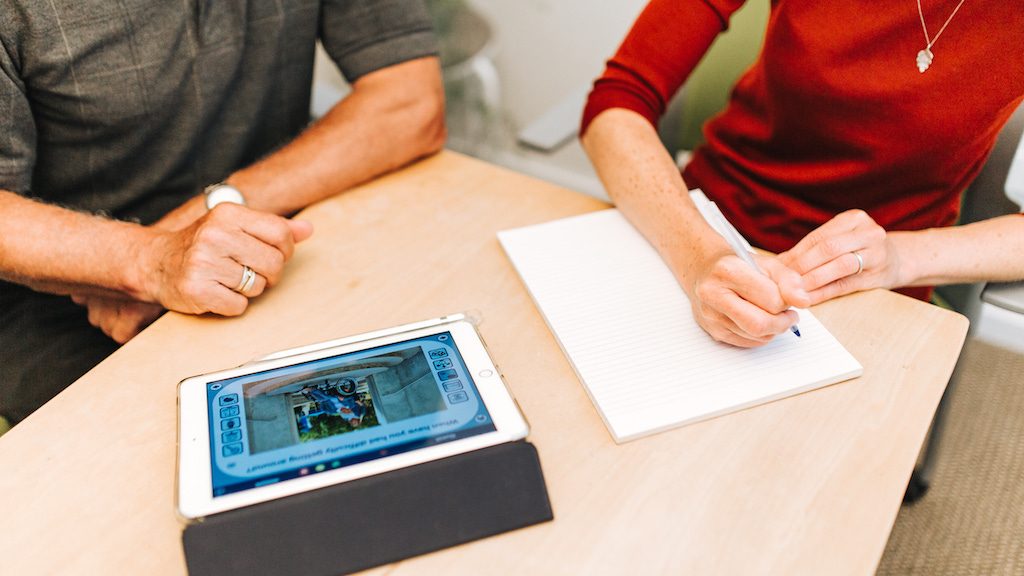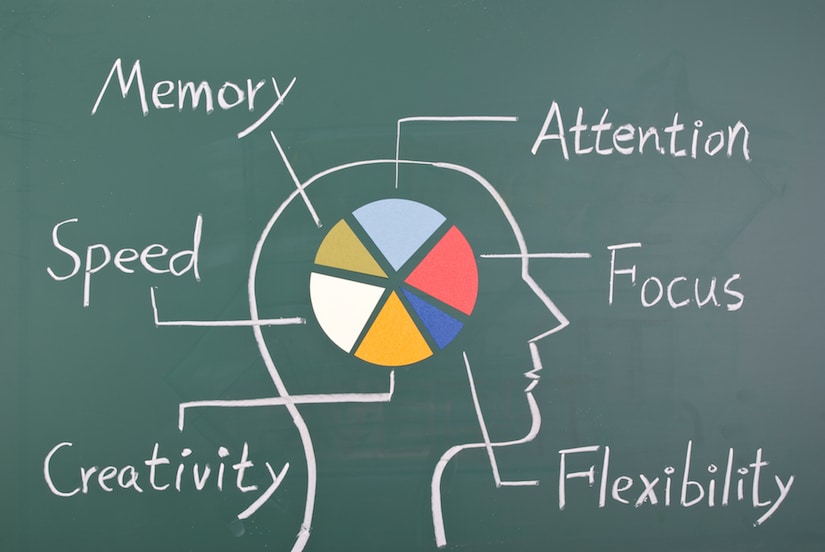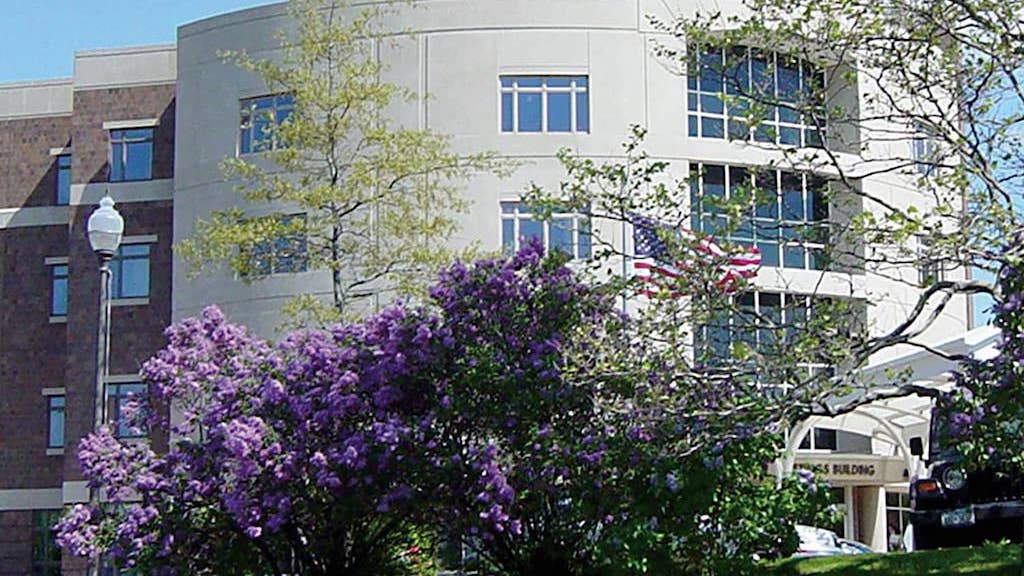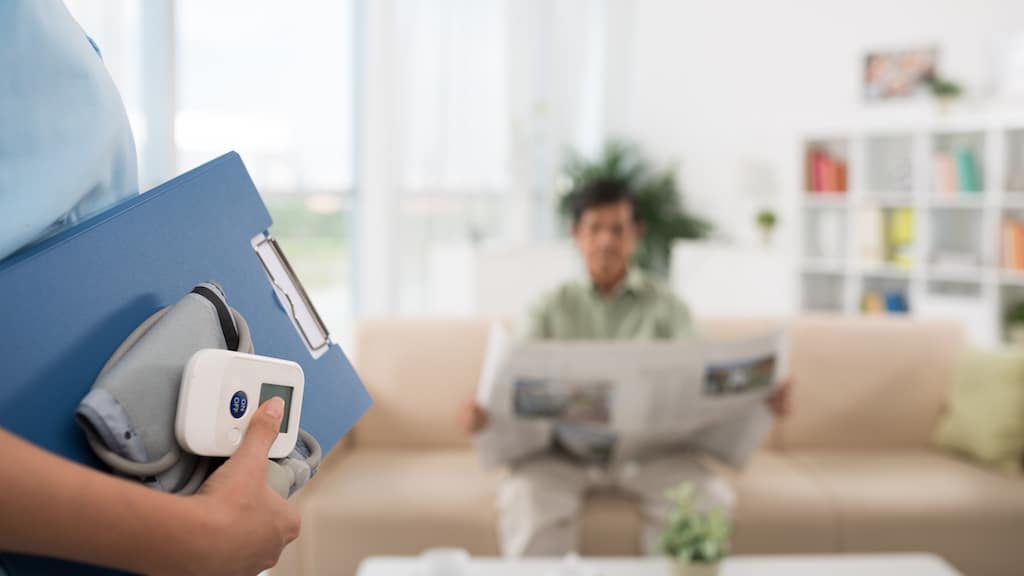A Day in the Life of a Rehab SLP
5 min read
SLPs work in many different settings with people of all ages, treating disorders of speech, language, pragmatics, swallowing, and cognition. No two SLP’s days will look the same, and it’s this variety that makes our career so interesting. I’d like to share with you what one of my days working in an inpatient rehab unit looks like, so you can get a sense of what goes into being a “speechie” and why I love my work so much.

8:00 a.m. Mini-Rounds
My day begins with a meeting with the therapy team for a quick run-down of any notable changes in the 20 neurologically-impaired patients on the rehab unit. We share tips about what’s working in our individual therapy sessions and how to integrate these techniques throughout the day. Open and frequent communication among the speech, occupational, physical, and recreational therapy staff allows us to be an interdisciplinary team working together, rather than a multidisciplinary team with each member working in isolation.
8:30 a.m. Preparations
The SLP from the acute stroke unit called yesterday to let me know one of her patients, Mr. Jones, was headed to rehab. To prepare to assess this new patient, I pop into the nursing station to do a quick chart review. The reports from doctors, nurses, and other therapists, along with the radiology reports, give me a good idea of what I’ll see.
9:00 a.m. Aphasia Assessment
For my first session with Mr. Jones, I have a few goals: build trust and rapport, get some baseline data, and figure out where to start therapy. To do this, I minimize the use of tests and instead start with a diagnostic interview and therapy. Mr. Jones has trouble speaking a single word, so I show him how he can be successful by watching my mouth and speaking slowly in unison with me. He’s thrilled to hear himself speak, and I’ve won him over. I’ve also gathered what I need – Mr. Jones has severe expressive aphasia and verbal apraxia, but he’s an insightful man who has a lot of potential for recovery. I leave a note in his room for his wife to come to therapy tomorrow, so she can learn the strategies too.
10:00 a.m. Cognitive-Communication Therapy
I get back to my office to find my next patient, Ms. Chen, waiting in the hallway. This is huge! Ms. Chen has never arrived on time to therapy since a car accident left her with a traumatic brain injury, resulting in trouble with attention and memory. I have been teaching Ms. Chen to enter her appointments into her smartphone, and it seems to be working! We talk about this success and how it feels, building insight into her problems and the strategies she’s using to overcome them. We review the process of entering an appointment with a reminder alert from start to finish again, with me preventing her from making any errors along the way.

11:00 a.m. Dysarthria Treatment
Mr. Sandhu comes to me directly from the gym where he’s been practicing climbing stairs with the physical therapist. He had a stroke about a month ago that left him weak on the left side of his body and face, which has also affected the clarity of his speech. He’s able to tell me the strategies we’ve been using – speaking more slowly, loudly, and articulating clearly – and then uses those strategies while reading aloud and conversing about his upcoming discharge from the hospital. Toward the end of the session, Mr. Sandhu is recognizing his own errors and stating the strategy he forgot to use. This ability to self-correct is a great sign that he’s ready for discharge from speech therapy.
12:00 p.m. Mealtime Observation
All the patients are in the dining room eating lunch, and I’m there to see if Mrs. Pirelli is ready for an upgrade from the minced texture diet she was prescribed by the SLP in acute care. While over half of survivors have swallowing problems after a stroke, most dysphagia resolves in the first 1-2 weeks. I give Mrs. Pirelli the same deli sandwich the other patients are eating, looking for signs of food entering her lungs or getting stuck in her mouth as she eats. The good news is that she’s ready for a regular diet, and she’s thrilled. No more oatmeal for breakfast! I put through the new diet order to the kitchen and chart my intervention.
12:35 p.m. Lunch Break
Now it’s my turn to eat, and also to check email, return phone calls, fax reports, finish up some progress notes…
1:00 p.m. Family Conference
The whole team assembles in the conference room to meet with Mr. Sandhu and his family to go over the plan for sending him home tomorrow. We review his progress in therapy, referrals for outpatient therapy, and other recommendations. When families don’t feel prepared to cope at home, these meetings can be contentious. In this case, Mrs. Sandhu has equipped the home as recommended and has frequently attended therapy with her husband, so she is prepared for a smooth transition.
1:45 p.m. Rehab Assistant
The conference ends earlier than scheduled, so I check in on Carol in my office doing aphasia therapy on the iPad with Mr. Horton. Carol is the speech therapy assistant I supervise who comes onto the unit in the afternoons. Speech assistants increase the intensity of therapy for patients, a critical factor in their recovery.

2:00 p.m. Group Therapy
Carol and I meet with four other patients in the conference room. They have a variety of speech, language, and cognitive impairments, but we work together as a group with each patient using their own strategies. Today we’re playing a game that requires asking relevant questions, understanding categories, providing clues, remembering what has been asked, using logic to solve problems, and not blurting out the answer. Everyone is having so much fun they almost forget they’re doing therapy.
3:00 p.m. Paperwork
While Carol teaches another patient how to use a communication book, I spend the last hour of my day typing up my assessment and treatment plan for Mr. Jones, as well as a discharge summary for Mr. Sandhu. Before leaving for the day, I set my schedule for tomorrow and log statistics about how I spent my time.
A Good Day
Some days are filled with more challenges than triumphs, but today was a good day. There are days when patients break down in tears, when families take out their grief as anger, when management enforces some unreasonable new policy, or when patients don’t get better. However, the days when you get to be there for a patient’s first words, to give the all-clear for the much-desired cheeseburger, or to receive the gratitude of a family who cannot thank you enough for helping them in a difficult time – those are the days that keep you coming back.




